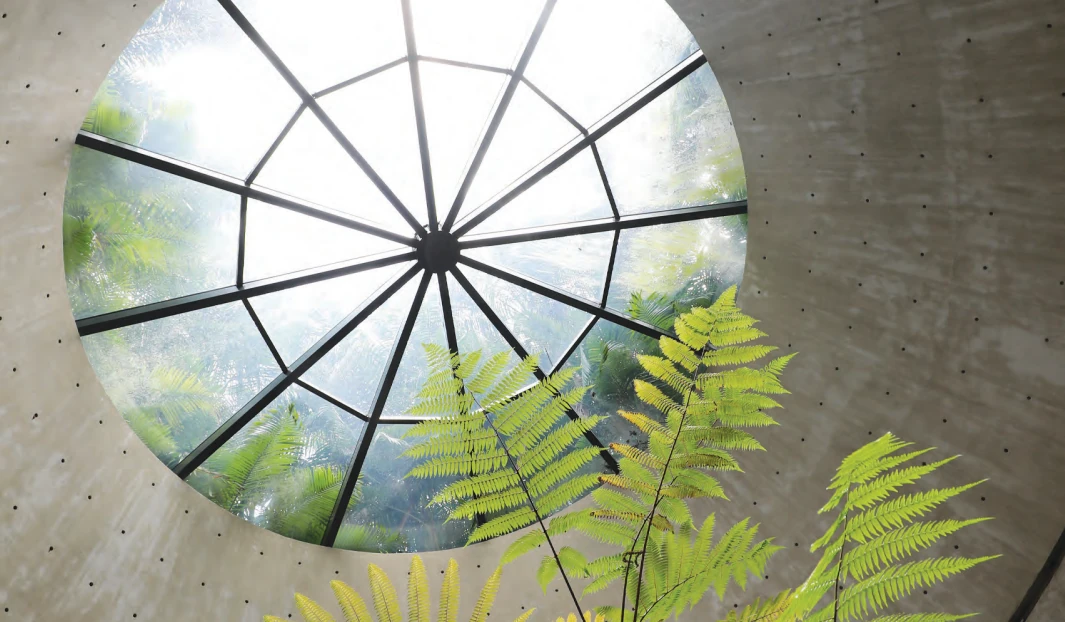- +27 (0) 10 109 2987
- info@penetron.africa
Brochure
Penetron Zero Carbon Concrete
Discover how Penetron Admix can reduce your concrete project’s carbon footprint, increase durability, and support LEED certification
Brochure
Penetron Zero Carbon Concrete
Discover how Penetron Admix can reduce your concrete project’s carbon footprint, increase durability, and support LEED certification

The cement industry’s contribution to CO2 emissions and climate goals
The global cement industry is the second-largest producer of CO² and thus one of the main focus points of the COP26 climate targets. Recognizing this, Canada, Germany, India, the UAE and the UK have already pledged to attain net zero in the “major public construction” use of concrete and steel by 2050. In line with these goals, 40 global concrete and cement manufacturers under the GCCA are now committed to cutting CO² emissions in half by 2030 on the path to achieving net zero by 2050.
Since the concrete structure provides the lion’s share (ca. 66%) of a building’s embodied carbon, concrete is the most pressing issue to address. As the carbon footprint of water and aggregates is negligible, the carbon footprint of concrete is determined almost entirely by cement (0.93kg CO²/kg), making it the largest contributor to embodied carbon in the built environment. In addition, cement production also generates high nitrogen oxide (NOx) and sulphur oxide (SOx) emissions, which contribute to acid rain, a further deterioration of public health and global climate change.
Climate change and the growing need for sustainable building solutions
As temperatures continue to rise over the next century, natural disasters like floods, hurricanes, droughts, and heat waves will intensify, eventually making parts of our planet uninhabitable. Industry, architects and engineers alike are now tasked with incorporating low carbon products and sustainable solutions into their projects.
The cement industry’s contribution to CO² emissions and climate goals
The global cement industry is the second-largest producer of CO² and thus one of the main focus points of the COP26 climate targets. Recognizing this, Canada, Germany, India, the UAE and the UK have already pledged to attain net zero in the “major public construction” use of concrete and steel by 2050. In line with these goals, 40 global concrete and cement manufacturers under the GCCA are now committed to cutting CO² emissions in half by 2030 on the path to achieving net zero by 2050.
Since the concrete structure provides the lion’s share (ca. 66%) of a building’s embodied carbon, concrete is the most pressing issue to address. As the carbon footprint of water and aggregates is negligible, the carbon footprint of concrete is determined almost entirely by cement (0.93kg CO²/kg), making it the largest contributor to embodied carbon in the built environment. In addition, cement production also generates high nitrogen oxide (NOx) and sulphur oxide (SOx) emissions, which contribute to acid rain, a further deterioration of public health and global climate change.
Penetron Admix - Advancing low-carbon concrete solutions
Significantly reduce your concrete structure’s carbon footprint with PENETRON ADMIX
- In-depth waterproofing (reducing permeability).
- Self-healing.
- Durability / service life extension.
- Compatibility with supplementary cementitious materials (SCMs).
- Reducing cement content and cover.
- Protection against chloride penetration and carbonation.
- Eliminates high carbon emission products.
Penetron Admix is a sustainable, crystalline admixture that reduces concrete permeability. By providing comprehensive protection against concrete deterioration caused by chemical attack, corrosion, and freeze-thaw cycles, Penetron Admix extends the service life of concrete structures. Easily mixed in during batching and unaffected by climatic conditions, it helps reduce the overall carbon footprint of concrete mixes and construction projects.
Read our Penetron Zero Carbon Brochure and explore how Penetron Admix can transform your next concrete project!
Download Penetron Zero Carbon Brochure
Learn how Penetron Admix supports sustainable construction by improving concrete durability, reducing emissions, and enhancing long-term performance.


